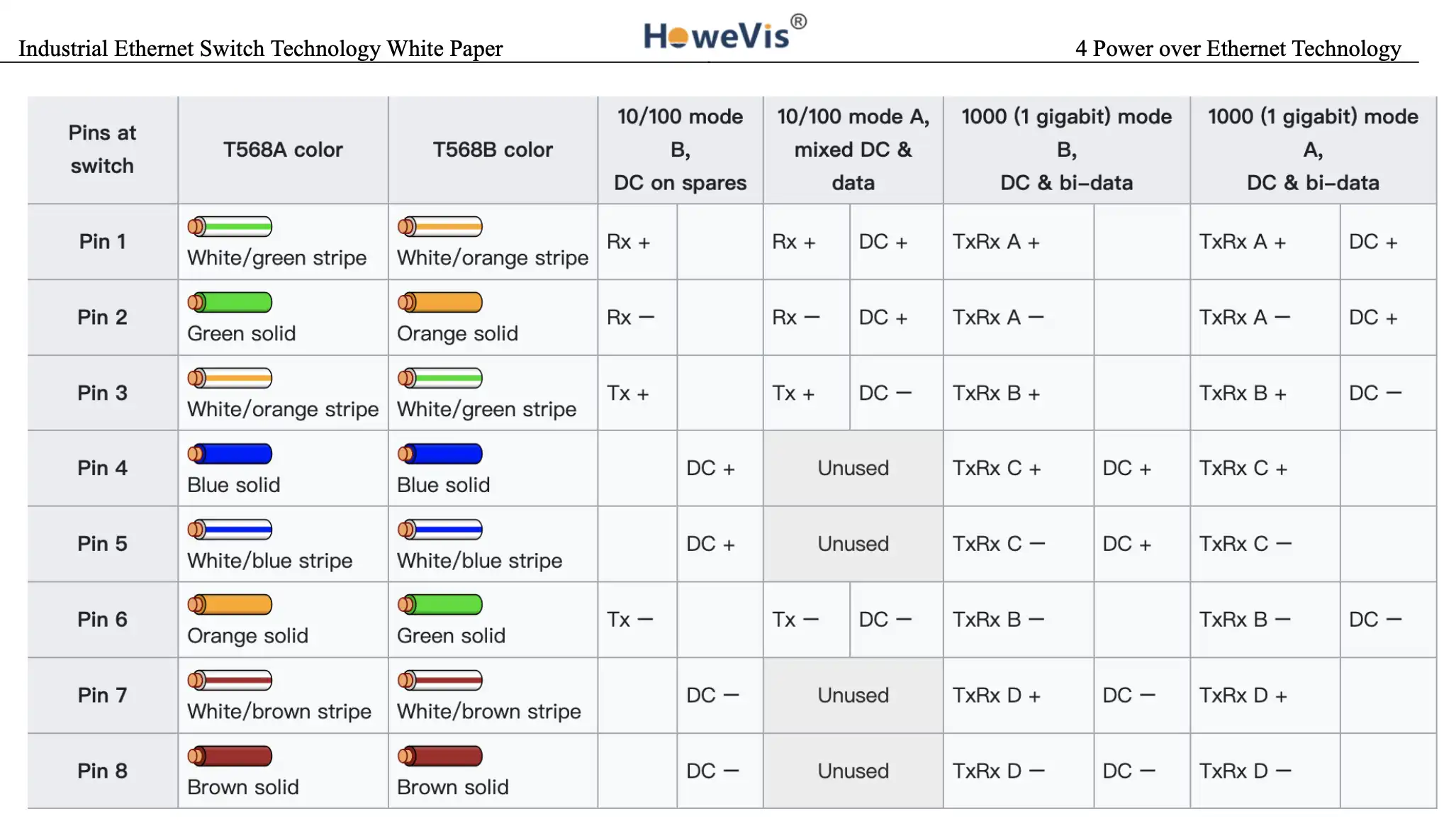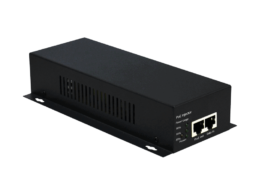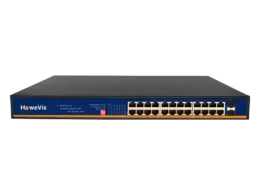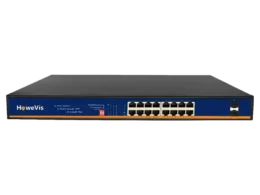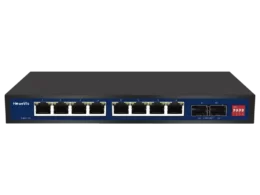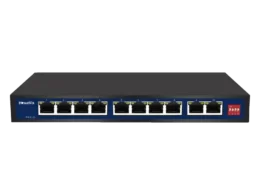PoE, or power over Ethernet, uses Ethernet ports to deliver the power and data connection to PoE devices. We can not simply answer the question about the number of pairs a PoE device requires. Instead, we must determine its PoE compatibility and power standard over Ethernet used at such places. For example, if you are using PoE 802.3af, it is compatible with older versions of Ethernet ports like the two pairs.
However, at each step, we can divide our research, understand the technical aspects of each PoE standard, and determine compatibility for each standard. In this guide, I will briefly highlight PoE technology and help you comprehend various facts related to data and power.
What is Power over Ethernet technology?
Power over Ethernet (PoE) is a networking technology based on the principles of the Institute of Electrical and Electronics Engineering.
It is popular due to data and power transmission over a single Ethernet port. Moreover, it offers customers higher data speeds and a safe browsing experience. That’s why people prefer Ethernet technology over wireless access points like Wi-Fi.
Suggested Reading: What is PoE?
How does power over Ethernet technology work?
Here is our main question: How does Power over Ethernet work? The simple and concise answer is that you have to use a PoE switch compatible with the PoE standard.
That switch will deliver the power and data to the PoE devices. If your devices are not PoE compatible, you might not get the power and data supply from the switch. So, to achieve high network performance and get the PoE power, you must employ:
- Network switch
- PoE devices
However, if your device is not PoE compatible, you have other options, like the PoE injectors.
3 Essential Steps to Making a PoE Network
Do you want to build a PoE network? If yes, there are some requirements to fulfill it. For example, you need PoE devices. I have listed the following components to build a PoE network.
PoE device:
The PoE device is a specific device that works according to IEEE standards. If you are using IEEE 802.3af, it will support the network and work on it efficiently. So, a PoE device can be an IP camera or computer you want to connect. Nowadays, most devices have built-in compatibility with the power over Ethernet.
Ethernet Ports:
Ethernet ports are not simple cables. Therefore, you can’t install the Ethernet cabling system everywhere. Instead, they have specialized jacks or connectors that link them with the PoE switch and power and data transmission device.
There are two types of Ethernet ports:
- Copper ports have a range of around 100 meters.
- Optical fibers run for miles and are better for transmission over long distances.
You find the Ethernet ports’ categories in the copper ports, like the CAT1 to CAT8 ports. All these have different compatibility with IEEE standards.
PoE switch:
The PoE switch acts as a bridge that builds the link with the PoE device. However, you can consider it a power source that supplies power and data in two ways.
Router:
Do you need the minimum number of bottlenecks? Great! Higher network performances always help get the best for your business. It is where we consider the routers.
Routers are devices that reduce the potential number of bottlenecks in the network and optimize its security. These analyze the coming data packets and offer them routes.
After getting all the components, you can make the network. Here are the different steps to creating a PoE Network.
Step 1: Set Up All tools at the required place
Before setting up the network, ensure all power-sourcing equipment and devices work fine. You can place them in the right place. For example, if you are looking for a Surveillance system, you can install your IP camera outside your home or office. Similarly, you can use a separate room for the monitoring structure.
Step 2: Build a connection with the PoE-powered devices
Once you have all your powered devices in the right place, it is time to build the connection with the powered device. For this purpose, you can plug your Ethernet port into the RJ45 connector jack to complete the process perfectly.
Step 3: Connect the PoE switch with the PoE device
Do you have power-sourcing equipment to build your (power over Ethernet) PoE network? If yes, it is time to plug the Ethernet cable into it. It will link the power-sourcing equipment and the powered devices, fulfilling the system. Your IP camera can now receive power and data from the PoE switch.
Additional Step: Link your Router
Do you have a router to optimize the network performance? You can connect it with your switch. It will analyze the data packets and provide them with a route.
3 Fundamental Types of Power over Ethernet Ports
In Ethernet technology, we come across multiple types of category Ethernet ports. They have different pins, connectors, and shieldings. Depending on all those factors, you have to rely on the given IEEE standard and get high-power PoE from your PoE switches.
Here are three fundamental types of power over Ethernet ports.
Mode A
Mode A PoE cable has different features compatible with varying IEEE standards.
It has features like:
- It contains the data pairs and is utilized for data purposes.
- It has pins 1,2,3, and 6 for the connection.
- Pins 1 and 2 carry the positive DC power, while pins 3 and 6 take the negative power.
Mode A Ethernet ports are famous for power over Ethernet networks and are compatible with all the IEEE standards for PoE.
Mode B
Mode B is like the Mode A Ethernet cable that has different features such as:
- It has spare pairs.
- Its pins are labeled as 4,5,7 and 8.
- Pins 4 and 5 carry the positive DC power, while pins 7 and 8 carry the negative DC power.
Mode B Ethernet ports are also compatible with all PoE standards.
4PPoE
In 4PPoE, you get some advanced features solely operated by the PoE BT standard. Here are some features:
- It uses all four pairs of Ethernet ports. Hence, the pins are from 1 to 8.
- Pins 1,2,4 and 5 carry the positive DC power, while 3,6,7 and 8 are for the negative DC power.
You can use this Ethernet cable for Power over Ethernet if your IEEE standard supports it.
3 PoE standards and compatibility for PoE ports
Institute of Electrical and Electronics Engineering has defined standards for power over Ethernet.
We will explain the PoE standards and highlight their cable compatibility.
IEEE 802.3af
IEEE 802.3af was launched in 2003 and is still working in some networks.
It is compatible with Mode A and Mode B ports but not 4PPoE.
IEEE 802.3at
IEEE 802.3at was introduced in 2009, and some networks still have this system installed.
Like the previous IEEE standard, it can work with Mode A and B ports, not the 4PPoE.
IEEE 802.3bt
This PoE standard is the latest version, offering feasibility and other features at the high end.
It supports all the cables, including Mode A, B, and 4PPoE.
Final Words
When purchasing an Ethernet port for the PoE, you must check the pricing and quality. However, we have the best quality PoE ports. Howevision Professional is a Chinese supplier that facilitates its customers with quality PoE tools.
To optimize your network, you can get high-quality PoE injectors, extenders, and Ethernet cables. Call or message us to discuss the project.
